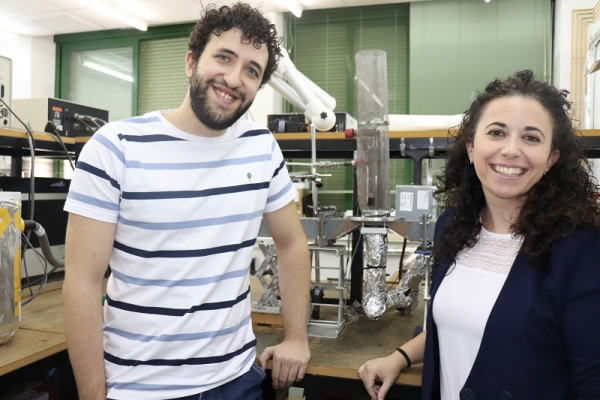Harder than a diamond, stronger than steel, as flexible as rubber and lighter than aluminum. These are just some of the properties attributed to graphene. Although this material has sparked great interest in the scientific community in recent years, there is still no cheap and sustainable enough method for its high-quality manufacturing on an industrial scale.
A research team from the University of Córdoba (UCO) has just published a new prototype in a scientific journal that could precisely represent a great step forward towards the large-scale production of this material, first synthesized in 2004, with those responsible winning a Nobel Prize six years later. This new technological design, which has already been registered for evaluation as a patent and is based on a previous patent of the team itself, increases the production of graphene by more than 22%, with the process maintaining the high quality that characterizes graphene synthesized with this technology.
Plasma: the matter lightning is made of
The work is based on plasma technology, a partially ionized gas often referred to as the fourth state of matter. Although there are natural plasmas, such as lightning and the Northern Lights, they can also be artificially generated in a laboratory. One of its great advantages, highlighted the study's lead author, Francisco Javier Morales, is that "it is a highly energetic medium that is capable of breaking down organic molecules very easily." Specifically, the team used this plasma torch to break down ethanol and rearrange the molecule's carbon atoms, resulting in the creation of graphene.
A Faraday cage to optimize energy
Although this graphene synthesis process is already protected under the group's patent, the study's novel innovation is its great increase in graphene production thanks to the process's energy optimization. As explained by the team's principal investigator, Rocío Rincón, previous studies by the group had shown that almost 43% of the energy supplied was dissipated and went to waste. This is a clear example of how, as is often the case in science, one finding leads to another, and applied research is built on the foundations of basic research.
To avoid, precisely, this valuable loss of energy, around the plasma the research team built a Faraday cage, a metal mesh that acts as an electromagnetic shield, similar to the one used by microwaves to insulate the system from the outside. In this way, according to the results of the study, while 4.3 milligrams of graphene were previously generated per minute and watt, with this new shielding, which takes maximum advantage of the plasma energy, 5.2 milligrams are produced with the same amount of time and power.
The study was carried out by the 'Plasma Innovation Laboratory' research group at the University of Cordoba, in collaboration with the Chemical Institute for Energy and the Environment (IQUEMA), which was partly responsible for the evaluation of the quality of the graphene produced.
Reference
F.J. Morales-Calero, A. Cobos-Luque, J.M. Blázquez-Moreno, A.M. Raya, R. Rincón, J. Muñoz, A. Benítez, N.Y. Mendoza-González, J.A. Alcusón, A. Caballero, M.D. Calzada. Increasing the production of high-quality graphene nanosheet powder: The impact of electromagnetic shielding of the reaction chamber on the TIAGO torch plasma approach, Chemical Engineering Journal, Volume 498, 2024, 155088, ISSN 1385-8947, https://doi.org/10.1016/j.cej.2024.155088.


